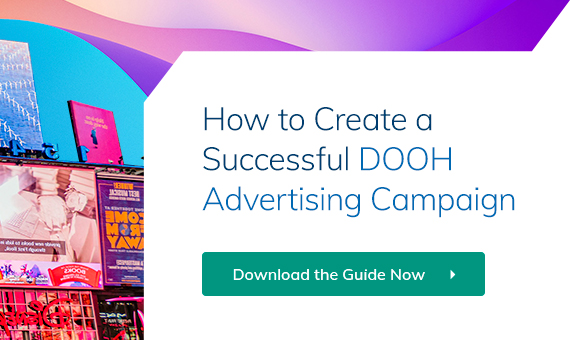Digital Out-of-Home (DOOH) advertising has been around for a good many years now, but it remains one of the most underrated forms of marketing.
In comparison to online Google ads or ads placed on websites, DOOH advertising offers huge benefits that are often overlooked by marketers seeking an effective way to reach their target audience.
According to a recent Research and Markets report – Digital OOH: Global Market Trajectory & Analytics – the global digital OOH market is projected to hit US$35.1 billion by 2027. The US accounts for roughly 30% of this market.
Programmatic DOOH (pDOOH), a subset of the DOOH ad market, is growing and is a modern and effective way for resort marketers to reach their target audience and drive results.
The use of digital billboards in public spaces is becoming increasingly popular in the hospitality industry, as it offers a new way to reach potential customers. In this blog, we will dive deeper into the benefits of pDOOH advertising and why it is a must-have tool in the resort marketer’s toolkit.
Advantages of using pDOOH in Resort Marketing
One of the key advantages of pDOOH advertising is the ability to reach a target audience at specific times and locations.
For example, if a resort wants to target travelers who are in transit, they can display their advertisements on digital screens located in airports, shopping centers, sport arenas and transit hubs. This type of advertising can be highly effective in reaching a large audience and increasing brand recognition. In addition, programmatic DOOH advertising offers the ability to reach potential customers at various stages in the marketing funnel, from raising awareness about a resort and its offerings, to providing more information, building interest and driving bookings and conversions.
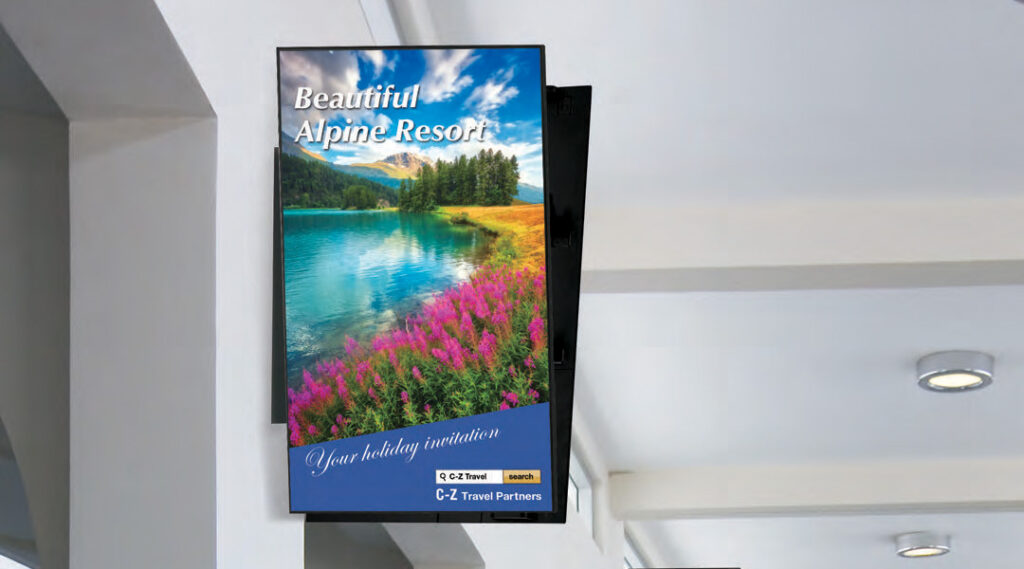
(Image source: sharpeit.com.au)
Another advantage of pDOOH advertising is its ability to manage a resort’s online reputation.
With more and more people relying on online reviews to make decisions about where to stay, it is important for resorts to maintain a positive online reputation. By using pDOOH advertising, resorts can highlight their positive attributes and promote themselves to potential customers in a visually appealing way. This can help to boost a resort’s online reputation and increase bookings.
Boosting Resort Marketing Visibility Using pDOOH:
Location-based and demographic targeting: Resorts can target specific locations where their target audience is likely to be found.
For example, a resort chain would gather data on the tourist hotspots, such as airports, train stations and popular tourist landmarks. This data would include location, foot traffic and demographic information of the tourists visiting these locations. Based on the data collected, the resort chain can target tourists visiting these hotspots by using programmatic DOOH advertising.
If the data shows that a high number of tourists visiting a particular tourist landmark are middle-aged couples, the resort chain can target this demographic specifically. With pDOOH, the resort can use display ads on digital billboards that showcase the resort’s amenities, packages and special offers.
Using real-time data, the resort can further optimize the ad campaigns, ensuring that the ads are being displayed to the right audience at the right time.
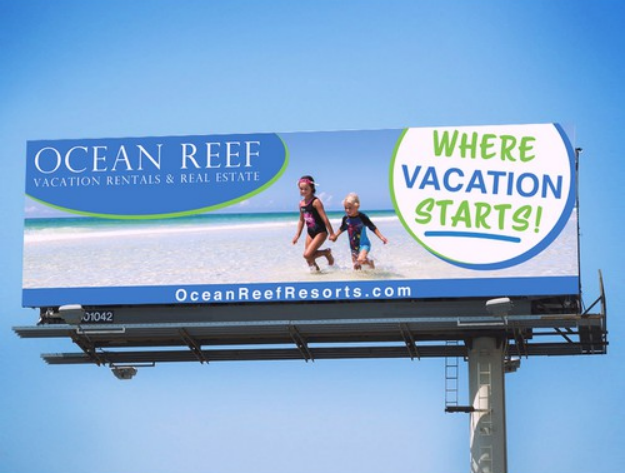
(Image source: 99designs.com)
Contextual targeting and dynamic creative optimization:Resorts can target specific environments or events, such as conferences, trade shows, or sporting events. This allows them to reach people who are likely to be interested in their offerings.
By using contextual targeting, the resort can deliver advertisements to travellers who are likely planning or in a vacation-minded state of mind.
Through real-time data and analysis, the pDOOH platform can determine the location, time of day, weather and other relevant factors to serve advertisements for the resort.
For example, if it is hot and sunny outside, the advertisement might show images of the resort’s pool and beach, accompanied by a message like “Escape the heat and come to our tropical paradise.” On the other hand, if it is raining in the traveller’s current location, the advertisement might show images of the resort’s indoor spa and lounge areas, accompanied by a message like “Take a break from the rain and relax in our luxurious spa.”
For parents, children could be shown the resort’s family-friendly activities with a message like “Bring your kids and create memories they’ll never forget at our resort.”
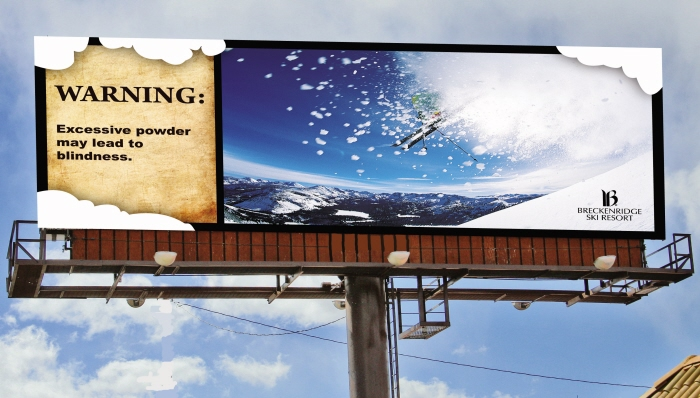
(Image source: slopefillers.com)
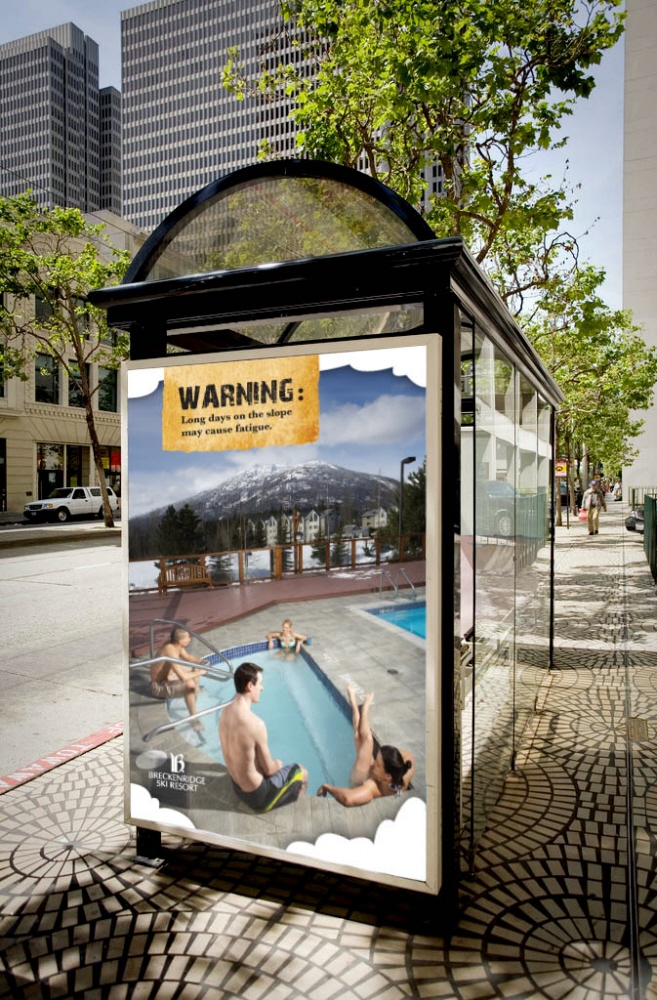
(Image source: slopefillers.com)
With pDOOH, the feature of dynamic content allows for flexibility in in real-time. This means that resorts can quickly and easily change their advertisements to respond to changing market conditions, such as promoting last-minute deals or highlighting new amenities.
Overall, the benefits of pDOOH in resort marketing are numerous and powerful. Whether it is used to reach a target audience, manage a resort’s online reputation, or increase online bookings, programmatic DOOH advertising is a must-have tool for resort marketers.
With its ability to reach potential customers in a visually appealing way and drive results, pDOOH advertising is the future of digital marketing in the hospitality industry.
By utilizing pDOOH, resorts can increase the relevance and impact of its advertisements to its target audience, leading to greater engagement and higher likelihood of booking a stay.
Get Started with Programmatic DOOH Today
With The Neuron, this all happens via single-click processes on a dashboard that’s easy to use and navigate. You can then use the platform to track your campaign and view in-depth analytics so you can adjust and optimize in real-time.
It couldn’t be easier to get started with programmatic DOOH. Start now!

